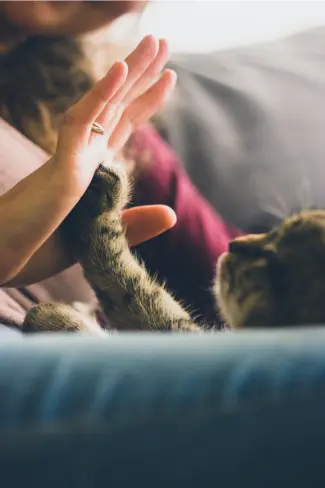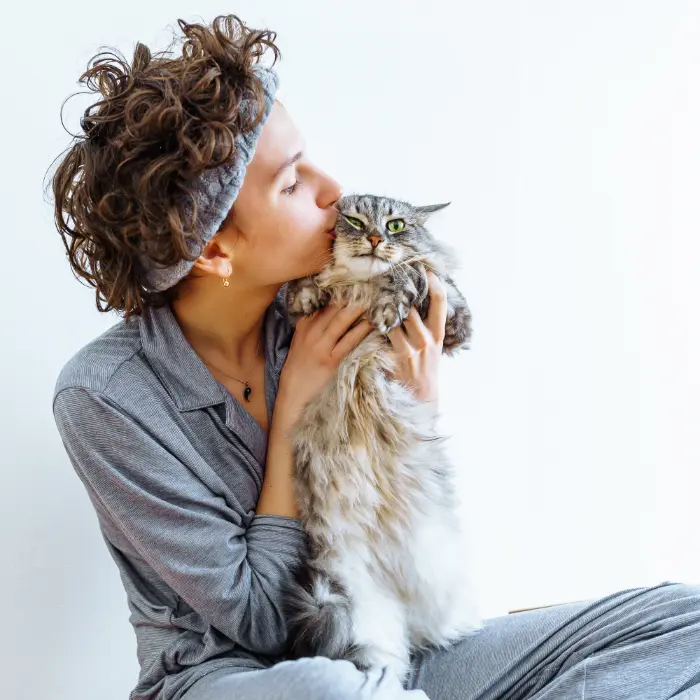Administering Insulin to Your Kitty: A Step-by-Step Guide
Look, managing a feline with diabetes isn’t easy—it demands dedication and plenty of love. The key? Mastering those daily injections. This complete guide will walk you through everything, offering practical tips, firsthand experiences, and the encouragement you need to tackle this like a pro. You’ve got this!

Understanding the Importance of Blood Sugar Regulation
Keeping balanced glucose levels is vital for felines with diabetes to support their well-being. Before outlining the steps, it’s key to recognize how crucial proper hormone management is for their overall condition.
Preparing for the Administration
Gather Your Supplies:
Make sure all necessary items are ready – the medication vial, syringe with the prescribed needle, alcohol swabs, and some treats for positive reinforcement.
Check the Medication Vial:
Gently roll the vial between your palms to ensure the contents are well-mixed. Avoid shaking, as this can create air bubbles.
Prepare a Comfortable Space:
Pick a calm, comfortable spot where you both can relax. A peaceful setting will help everything go more easily.

The Insulin Shot Process
Step-by-Step Guide for Giving Your Pet an Injection:
Clean Your Hands Thoroughly:
Start by giving your hands a good, soapy wash. Use warm water and scrub for at least 20 seconds, making sure to get between your fingers and under your nails. This step helps keep everything hygienic and prevents any unwanted germs from coming into contact with your furry companion during the process.
Get the Syringe Ready: Fill the syringe with the exact amount your vet recommended. Once filled, point it upward and lightly tap the side to let any trapped air rise to the top. This helps make sure the amount you’re giving is right on the mark.
Move in Gently and Reassure Them:
Take a moment to approach with ease—no sudden movements, no loud noises. Use a calm, soothing voice and let your tone stay warm and steady. Gently place your hand on their back or behind the ears, wherever they like being touched. These little gestures can go a long way in helping them feel secure. When they sense your calm energy, they’re more likely to stay still and cooperative throughout the routine.
Gently Pinch the Neck Area: Locate a soft, loose fold of skin near the base of the neck—usually between the shoulder blades. Use your thumb and forefinger to lightly lift and form a small tent-like shape. This lifted section creates a natural space just beneath the surface, making it easier and more comfortable to proceed with the procedure.
How to Give the Shot:
Gently guide the needle into the tented skin at a 45-degree angle, making sure it slips just under the surface and stays away from any muscle. Once in place, press the plunger slowly and smoothly to release the contents.

Changing Up the Spot: A Key Part of Managing Diabetes in Your Furry Friend
When managing insulin routines for your furry companion, it’s not only about getting the steps down pat—it’s also about being thoughtful with how and where you apply the treatment. One of the most common areas folks use is the loose skin just behind the neck. It’s easy to access and typically causes the least amount of fuss. But here’s the thing—using the same area over and over can lead to changes under the skin. Over time, this repetition might cause the tissue to toughen up, making it harder for the body to respond the way it should.
To keep things running smoothly, it’s wise to switch up the location from time to time. Changing where you deliver the dose helps avoid buildup of dense or scarred areas, which can get in the way of how well the body takes in what it needs. Different spots on the body also absorb the treatment at different rates, so alternating can even help with consistency in how your little buddy feels each day. And let’s be real—nobody wants a sore or sensitive patch from too much poking in the same place. Keeping things fresh and varied can make the experience more comfortable and effective in the long run.
Why Rotate Injection Sites?
Avoiding Skin Thickening from Repeated Use
Using the same area over and over again for those daily tasks can lead to the skin becoming tougher and less responsive over time. That buildup can make it harder for the body to respond the way it should. A good way to avoid this is by changing up the location each time. By doing so, you give the skin a chance to recover and keep things running smoothly, all while making the process more comfortable for your furry buddy.
Improved Absorption:
Your furry friend’s body doesn’t respond the same way everywhere. Some areas absorb what’s given quicker or slower than others. By varying the chosen spots where you apply it, you help support a more steady and predictable response. This small change can make a big difference in keeping those sugar levels from bouncing all over the place.
Easing Their Discomfort:
Some furry companions can become sensitive in certain areas over time. By switching up the area you work with during each session, you help avoid tenderness and make the entire experience feel less stressful. This gentle variety can also keep them more relaxed and willing when it’s time for their daily routine.
| Injection Site | Rotation Order |
| Left hind leg (lateral quadriceps) | 1 |
| Right hind leg (lateral quadriceps) | 2 |
| Left shoulder (triceps) | 3 |
| Right shoulder (triceps) | 4 |
| Left flank (midway between ribcage and hip) | 5 |
| Right flank (midway between ribcage and hip) | 6 |
Commonly Recommended Injection Sites:
1. Back of the Neck:
This region, located just between the shoulder blades, is widely chosen by many feline owners due to its flexibility and ease of access. The skin here tends to be loose, making it simpler to lift and create a small fold. When gently raised, this area forms a natural pocket beneath the surface, ideal for delivering substances beneath the skin.
Many folks find this spot helpful when starting out because it allows them to work quickly and confidently. Plus, most furry companions are less sensitive here, which helps reduce their reaction during the process.
However, it’s important not to use the same exact point repeatedly. Over time, relying on one small area can lead to toughened skin or minor irritation. To avoid that, choose slightly different places within this upper-back region each time. Think of it like shifting your aim just an inch or two left or right each day—it’s a small adjustment that can make a big difference in keeping things comfortable for your four-legged friend.
Lastly, keep a mental note or even jot down where you’ve worked each day. Changing things up regularly helps everything go smoother and ensures your little buddy stays as cozy as possible throughout the routine.
2. Shoulders and Flanks:
The shoulder area and the sides near the midsection—commonly called the flanks—are known for having naturally loose skin, which can make them more comfortable zones when it’s time to give your furry pal their daily hormone support. Using these parts of the body alongside the scruff behind the neck helps create a pattern where you’re not using the same skin surface too frequently.
Why is that important? Well, consistently relying on one area can lead to minor issues over time—like the skin becoming a bit tougher or more sensitive. But by changing up the routine and using different spots like the upper shoulders and the area along the ribs, you’re helping the body absorb the hormone more smoothly. It also tends to reduce the chances of discomfort or tenderness, which means your four-legged buddy might be less likely to squirm or fuss during the process.
This thoughtful approach builds a rhythm—keeping things more predictable for you and more pleasant for them. Over time, many folks find their companion starts to relax more once they figure out this whole routine is just part of the day.
3. Area Behind the Front Legs – A Gentle Alternative for Daily Use
If you’re looking for another spot that’s both practical and less likely to become sensitive over time, consider the soft skin tucked behind the front legs. This region has enough flexibility and looseness in the surface layer, which makes it easier to gently slide in the needle without causing too much fuss.
When working with this area, it’s important to stay calm and confident. Use one hand to lift the skin slightly, creating a small tent-like fold. With the other hand, position the needle at a slanted angle—about 45 degrees—and slide it beneath the top layer of the skin. Avoid pressing too hard; you’re aiming for just beneath the surface, not into any muscle.
This location is often overlooked, but many folks find it useful, especially when they’ve used up more common areas. Just make sure to keep track of which part you’re using each time so no single region becomes overused or irritated. If your furry friend shows signs of discomfort with one spot, this area can be a nice alternative that still keeps things consistent and smooth.
Adding a little praise or a treat afterward doesn’t hurt either—it helps make the experience more positive and something they learn to accept as part of the routine.
Tips for Effective Site Rotation:
Create a Routine: Listen up, everyone! When giving those important doses to your furry friend, stick to a plan. Set up a rotation for where to administer them—switch spots with each dose or follow a set pattern over several days. This helps keep them feeling their best.
Track Placement Patterns: Make a habit of jotting down the exact areas you’ve used each time you give the dose. Keeping a clear log prevents using the same area too frequently and ensures every region gets equal rest. Over time, this habit can help you avoid skin problems and make the process easier on your furry buddy, especially when you’re following a long-term treatment routine.
Consult Your Veterinarian: Before adjusting your kitty’s routine, be sure to check with your vet. Seriously, they’re the experts. They’ll offer personalized advice based on your furball’s health and needs.
Listen up, everyone! If your furry companion has this condition, rotating injection sites is essential. Changing the spot where you administer helps prevent issues and ensures the treatment works better. It’s a simple step that makes a big difference for their well-being.
Personal Experience: Facing the Initial Hurdles
John, a pet parent from California, shares his initial struggles. He recalls, “In the beginning, I was concerned about making my furry friend uncomfortable. But my vet reassured me that the loose skin in that area makes the process less bothersome for them. Trusting that advice really helped me feel more at ease.”
Post-Administration Care
Handling Used Needles the Right Way:
Once you’ve finished the process, don’t toss those used needles and syringes into the regular garbage can. That’s a big no-no. Instead, place them into a puncture-proof container that’s specifically designed for sharps. These containers are built to keep everyone—family members, sanitation workers, and even curious pets—safe from accidental pricks. Proper disposal not only keeps your home accident-free but also helps keep the environment cleaner and more responsible. When the container is full, take it to your local pharmacy or disposal facility that handles biohazard materials. It’s a small step that makes a big difference.
Rewarding Your Furry Friend: A Moment of Joy
Right after the task is complete, it’s the perfect opportunity to shower your whiskered buddy with a little celebration. Whether it’s offering a crunchy snack they adore or engaging in a few minutes of their favorite game, this kind of positive follow-up turns the whole experience into something enjoyable. Over time, they may even start associating the routine with affection, treats, and bonding time. It’s all about creating a feel-good moment that builds trust and makes the process smoother for both of you.
Stay observant of your furry companion’s behavior: Pay attention to any shifts in mood, energy levels, or physical reactions—like limping, flinching when touched, hiding, or refusing to eat. These subtle cues can be your first signal that something isn’t quite right. If you notice anything out of the ordinary, reach out to your veterinarian right away. Keeping your little buddy comfortable and feeling their best should always come first.
Case Study: Bella’s Remarkable Journey
Meet Bella, the adorable Siamese who fought a tough battle with her condition. Her dedicated owner, Emily, took on the responsibility of managing her treatment. It wasn’t just about the care—this journey turned into a beautiful bonding experience for them both.
Emily’s consistent care and emotional support worked wonders for Bella. Every time Bella sees the treatment syringe, she begins to purr – a sweet reminder of the connection they share.
Bella’s transformation is a testament to the power of compassion and love in overcoming challenges.
Conclusion
Now listen up, ‘cause I’m fixin’ to tell ya ‘bout givin’ those shots to your diabetic kitty. It might seem a mite intimidatin’ at first, but don’t go gettin’ your boots all in a twist! With the right know-how and a heart full of compassion, you can turn it into a downright positive experience for both you and your feline sidekick.
Here’s the scoop: Every feline has its own personality, you know? So spend some time understanding your furry friend. Learn their preferences, then tailor the process to suit them. It’s like a quick dance together—one, two, and done!
And here’s the real kicker, friend: By keepin’ up with these treatments, you ain’t just handlin’ their condition. Nope, not even close! You’re actually strengthenin’ your connection with your furry pal. It’s like tellin’ ’em, “Hey, I’m here for you!” So stick with it, partner! You’re doin’ great!
Now, if ya need more tips or got any other questions, just holler, eh?
